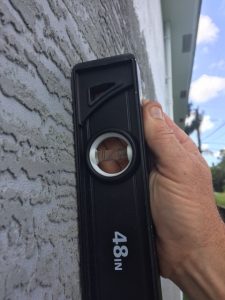 As a fulltime home inspector, I am occasionally asked about signs that the seller is trying to hide something. While the vast majority of sellers and agents I have dealt with over the years are honest and totally upfront, occasionally I cross paths with an amoral player. A good home inspector needs to recognize the signs, like a sixth sense, that something might not be right. The following is a short list of circumstances off the top of my head I’ve encountered in the past year.
As a fulltime home inspector, I am occasionally asked about signs that the seller is trying to hide something. While the vast majority of sellers and agents I have dealt with over the years are honest and totally upfront, occasionally I cross paths with an amoral player. A good home inspector needs to recognize the signs, like a sixth sense, that something might not be right. The following is a short list of circumstances off the top of my head I’ve encountered in the past year.
Air Fresheners- I did an inspection of a home in Port St Lucie where as soon as you walked through the front door you were shot in the face by an air freshener. Every room had an air freshener. You guessed it, I discovered mold throughout the home (I lab tested to confirm) without having been disclosed by the seller. An over-abundance of air fresheners is certainly a red flag. Ever try selling a home with mold? Mold is probably the single biggest defect that a seller will try to conceal.
Area Rugs or Love Seats in odd spots- Some things stick out like a sore thumb. Recently I inspected a high-end condo in Jupiter which was completely unfurnished besides an area rug and love seat. By the way, a love seat without an accompanying sofa is a clue in itself. Underneath the rug were buckled tiles which probably would not have been discovered until closing day.
Air Conditioners with odd replacement dates- The typical life expectancy of an A/C system in South Florida is approximately 12 years. Chinese drywall wreaks havoc on copper which is used for central air conditioning and in particular the coil inside the air handler. Chinese drywall was used in Florida beginning in about 2001 but was imported in larger numbers after the 04-05 hurricanes through about 2007. These dates are important to know with regards to when appliances were replaced, particularly air conditioning, if contamination is possible. I recall an inspection I did in Stuart where the house was built in 2005 but the A/C manufacturing date was 2008. I curiously questioned the seller who confessed it was built with Chinese Drywall, all before entering inside the home. Turns out a full remediation was fully completed and that house sold. Port St Lucie had the vast majority of those issues, primarily because of the volume of homes that were built in that area at the time. The majority have been remediated by now. Pay attention to the dates on the appliances.
Hedges tight against structure- I suspect you don’t need as much experience with inspecting or real estate in general, to recognize that hedges tight against a structure can be an issue for several reasons. Back in April, I did an inspection on new construction in Palm City where young hedges had been planted the full length on one side of the house. Upon further examination, the whole exterior surface of the wall was off plumb, noticeably. Apparently, the stucco was poorly applied and ran down towards the foundation. It was severe enough that had the hedges not been there it would have been obvious from the street. This trick is also used to occasionally cover severe cracks caused by a shifted foundation. Always look behind the curtain.

Recent Comments